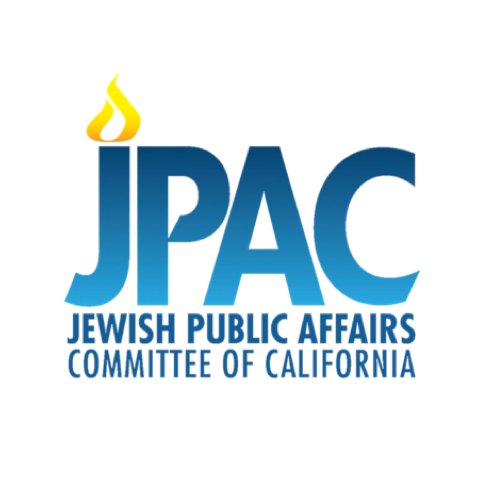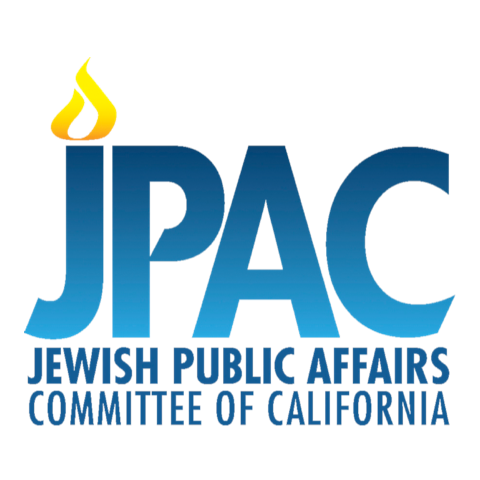The J.: $36 million on the table for Holocaust survivors in California
BY GABE STUTMAN | JUNE 8, 2022
Facing a projected $97 billion budget surplus, California’s governor and Legislature are being asked to do something unprecedented in the history of the state: earmark tens of millions of dollars to support aging Holocaust survivors.
On June 2, late in the budget negotiation process for the upcoming fiscal year, the Jewish Public Affairs Committee of California announced that a group of legislators had inserted $36 million into the current version of the $300 billion state budget for an initiative known as the California Holocaust Survivor Assistance Program.
The program was launched four years ago to supplement funds from the Claims Conference, the nonprofit that negotiates restitution from the German government each year, and private donors who give to California’s five major Jewish family service agencies that support survivors. Those agencies — based in San Francisco, the East Bay, Silicon Valley, San Diego/Orange County and Los Angeles — provide services such as home health care, direct financial aid and food service for Holocaust survivors who demonstrate economic need, and social enrichment and cultural programs irrespective of income.
The state assistance program was created in 2018 and funded to the tune of $3.6 million for a period of three years.
The tenfold increase — also to last three years — is an unprecedented proposal in California and is a massive sum relative to similar state initiatives elsewhere. For example, in New York state, which is estimated to have nearly 40,000 Holocaust survivors, Gov. Kathy Hochul recently approved $2.6 million in the budget for survivors this fiscal year. New York City also has local initiatives, said Greg Schneider, executive vice president of the N.Y.-based Claims Conference. But nothing on the scale that California is now considering.
Schneider said the outlay — which will require approval by the full Legislature by June 15 and from Gov. Gavin Newsom by June 30 — is sorely needed, in a state with some of the highest health care costs in the country.
It’s needed, Schneider said, even after the Claims Conference (or the Conference on Jewish Material Claims Against Germany) secured its largest payout in history this year: $720 million to support victims around the globe. That included more than $30 million distributed to California agencies, with $7.3 million going to S.F.-based Jewish Family and Children’s Services and $1.5 million to Jewish Family & Community Services East Bay.
The state budget line item is “reflective of a number of realities on the ground,” Schneider said. He cited “tremendous inflation,” which affects nearly every facet of the social services industry, as well as worker shortages in health care that have driven up the rate of pay for caregivers, which was already high in California.
“With the same or even increased funding,” California’s agencies “cannot provide the services that they need to,” he said.
There are approximately 12,000 Holocaust survivors living in California, according to Gia Daniller-Katz, who handles public affairs for S.F.-based JFCS. Exact numbers are difficult to come by, but the agency estimates about 4,000 survivors live in the Bay Area. Most are over the age of 85, “many are frail, and continue to bear scars,” JFCS says.
Best practices on medical care for Holocaust survivors — which is the largest direct expense for survivors borne by the family service agencies — can differ from that for the general population.
Health experts agree that it is generally best to allow seniors to age at home for as long as it is safe. For survivors, the need is amplified, advocates say.
“For people who lived in ghettos, or who were in hiding, or were in camps, certainly, it is very harmful to be put into an institution prematurely or unnecessarily,” Daniller-Katz said.
Holocaust survivors are also, on average, poorer than the average elderly Jewish American who did not suffer at the hands of the Nazi regime. Most had little to no inherited wealth when they emigrated. Various studies have shown the rate of poverty among American Holocaust survivors to be between 25 and 30 percent.
“This is not the American Jewish experience,” Schneider said. “Non-Holocaust survivors, Jewish elderly folks — of course, not all, but many — worked and paid into Social Security, and have accumulated savings.”
Many survivors came with “none of the assets their families may have accumulated over years, decades, centuries,” he added. “They literally came with nothing.”
Added Schneider: “It would be a relief to know there is an additional flow of $12 million per year for all of California. That would go a long way toward addressing the gap between what we’re able to provide and what is needed.”
The anticipated state surplus for the 2022-2023 fiscal year, which begins July 1, was spurred largely by income tax revenue. With the funds, Newsom has proposed an $800 gas reimbursement for car owners, and $1,500 bonuses for health care workers, among other initiatives.
The survivor assistance line item came after lobbying efforts by the Jewish family service agencies and JPAC, the Jewish Public Affairs Committee. Both worked with the California Legislative Jewish Caucus to insert the funding item into the current version of the budget.
“The nonprofits that do this work came to us and said, ‘We have a problem,’” said state Sen. Scott Wiener, who helped champion the program along with state Sen. Henry Stern and Assemblymember Jesse Gabriel, both of Southern California.
“These are people who went to hell and back,” Wiener, who represents San Francisco, Daly City and portions of South San Francisco, said of survivors. “And they deserve to live with dignity in their old age. And we need to be there for them.”
David Bocarsly, the Southern California–based executive director of JPAC, said he was “optimistic” about the prospects for the program funding, because it would be a hard thing for the governor to say no to, and the cost will not be a recurring one. The next decade or so represents a final opportunity to support victims of the Nazi genocidal regime, Bocarsly noted. The Claims Conference says the mortality rate of Holocaust survivors is 11 percent, increasing each year.
“This might be, in history, the most important moment for us to care for our aging survivors,” Bocarsly said.
To read the J. article, click here.
—
Gabe Stutman is the news editor of J. Follow him on Twitter @jnewsgabe.


